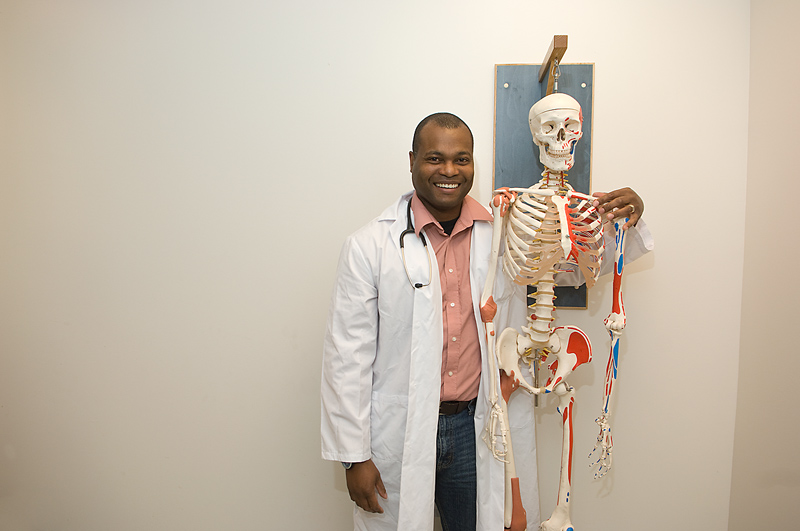
TUESDAY, Sept. 24 (HealthDay News) — Older people with a weight problem can relieve knee pain from osteoarthritis if they lose just 10 percent of their body weight through diet and exercise, a new study finds.
Overweight and obese people 55 or older who participated in a diet and exercise program reported less pain, better knee function, improved mobility and enhanced quality of life when they dropped one-tenth of their weight, according to the study in the Sept. 25 Journal of the American Medical Association.
“We’ve had a 162 percent increase in knee replacements over the last 20 years in people 65 and over, at a cost of $5 billion a year,” said lead author Stephen Messier. “From our standpoint, we think this would be at least a good way to delay knee replacements and possibly prevent some knee replacements.”
The 18-month study followed up on earlier findings that showed a 5 percent weight loss decreased knee pain and increased function in older folks, said Messier, a professor and director of the J.B. Snow Biomechanics Laboratory at Wake Forest University.
“We thought, well, 5 percent did great — what if we did more?” he said. “Would a more intense weight loss prompt more improvement on clinical outcomes?”
The study included 454 overweight and obese people who were suffering pain from diagnosed knee osteoarthritis. They were randomly assigned to one of three groups — diet-only, exercise-only, and diet and exercise combined.
Participants were put on a thrice-weekly exercise program that included two 15-minute walking sessions separated by a 20-minute strength-training session.
“The whole thing took an hour, including warm-up and cool-down,” Messier said. “It wasn’t anything super, that no one else could do. We think we got these results through very practical means.”
The dietary restrictions proved more intense. Researchers restricted participants to around 1,100 to 1,200 calories per day. They were fed up to two meal-replacement shakes per day of 300 calories each and a balanced dinner that contained between 500 and 750 calories, Messier said.
About 88 percent of participants completed the 18-month study. Researchers saw the following results:
- People who undertook a combined diet-and-exercise regimen lost more weight on average than folks who either dieted or exercised.
- The diet-and-exercise group had less knee pain, better function, faster walking speed, and better quality of life related to physical health than the exercise-only group.
- The groups that dieted or combined diet with exercise experienced reduced inflammation compared to the exercise-only group.
- People in the diet-only group enjoyed a significantly improved reduction in the amount of joint load placed on their knees compared to the exercise-only group.
The researchers also noted that there was a dose response to weight loss — the more pounds a person dropped, the better they felt, Messier said.
“Clearly, the group that lost greater than 10 percent of their weight had significantly less pain, better function, lower joint load and less inflammation,” he said. “When a physician is saying you should lose some weight, 10 percent should be the goal.”
Arthritis Foundation spokeswoman Dr. Patience White said the study’s findings should be encouraging to overweight people who suffer knee pain.
“We’re not talking about people getting down to ideal body weight,” said White, the foundation’s vice president of public policy and advocacy. “They just have to lose 10 percent of their total weight. Someone who is 300 pounds only needs to lose 30 pounds. I think that’s within reach for people.”
However, she encouraged arthritis sufferers to check with their doctors before starting a diet-and-exercise program. “If people want to become physically active, they need to do it in a way that doesn’t hurt their joints,” White said.
Study author Messier also warned that people who want results need to stick with the program through the long haul.
“I think without the long-term nature of the study we wouldn’t have seen some of the results. After six months, all three groups had the same amount of decreased pain. We only started seeing significant differences after 18 months,” he said. “We want to help people change their behavior long-term, so that they do this for the rest of their lives.”
More information
To learn more about osteoarthritis, visit the Arthritis Foundation.
Copyright © 2025 HealthDay. All rights reserved.

